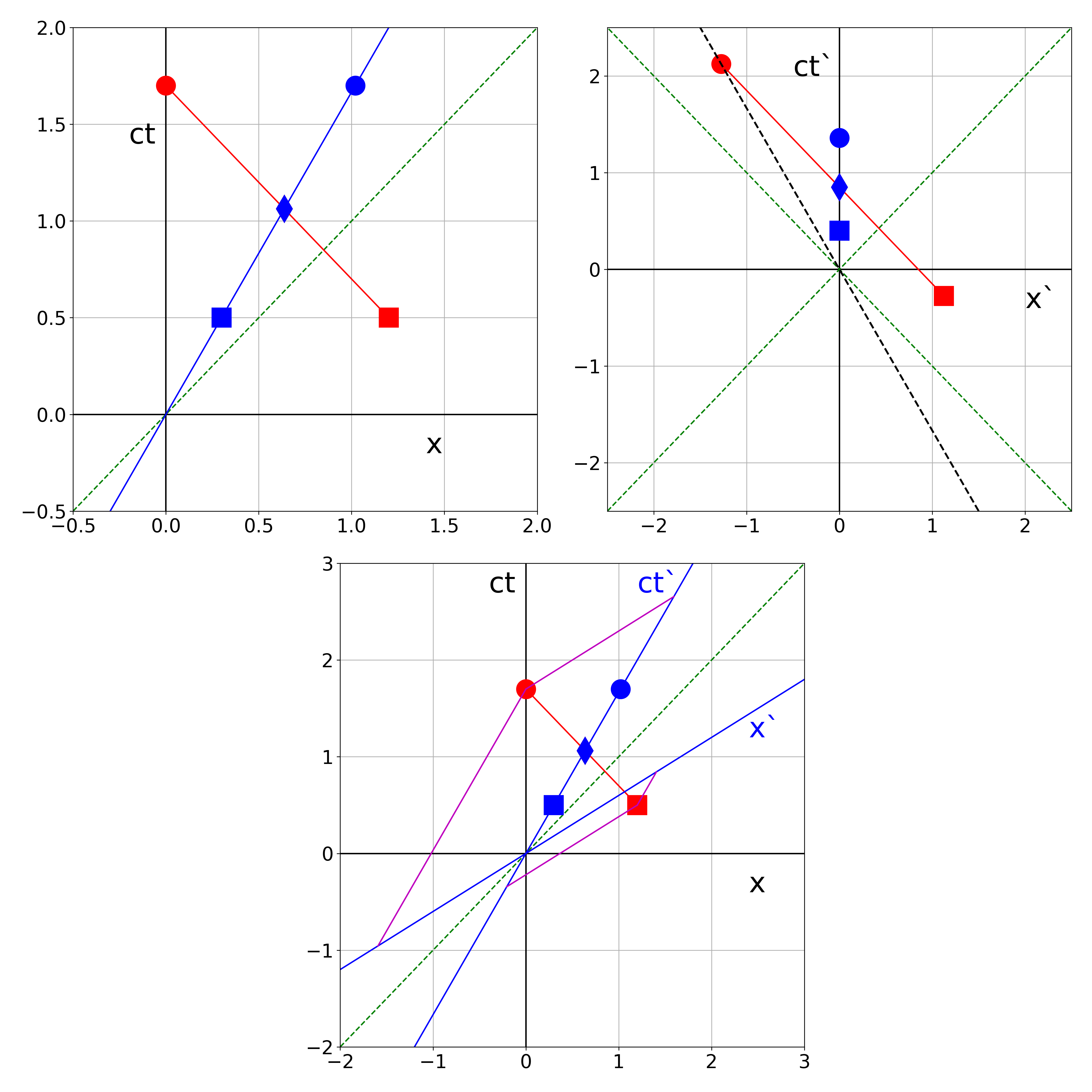a. E1: (ct1,x1)=(1,0) and E2: (ct2,x2)=(0,1)
→Δs122=(1−0)2−(0−1)2=0 light like b. E3: (ct3,x3)=(1,3) and E4: (ct4,x4)=(−2,1)
→Δs342=(1+2)2−(3−1)2=5 time like c. E5: (ct5,x5)=(1,2) and E6: (ct6,x6)=(3,4)
→Δs562=(1−3)2−(2−4)2=0 light like d. Transform to S′: V/c=12/13→γ=13/5
ct′x=γ(ct−cVx)=γ(x−cVct) E1: (ct1′,x1′)=(13/5,−12/5) and E2: (ct2,x2)=(−12/5,13/5)
→Δs12′2=(13/5+12/5)2−(−12/5−13/5)2=0 light like E3: (ct3′,x3′)=(−23/5,27/5) and E4: (ct4,x4)=(−38/5,37/5)
→Δs34′2=(−23/5+38/5)2−(27/5−37/5)2=225/25−100/25=5 time like E5: (ct5′,x5′)=(−11/5,14/5) and E6: (ct6′,x6′)=(−9/5,16/5)
→Δs56′2=(−11/5+9/5)2−(14/5−16/5)2=0 light like Of course, for all cases we find Δs′2=Δs2: distance defined according to our Minkowski inproduct is a Lorentz invariant, i.e. the same for all inertial observers.

